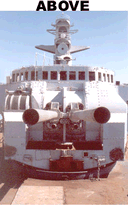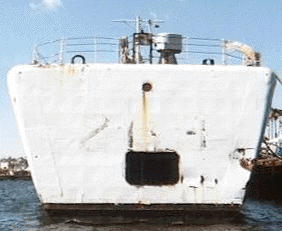Yukon
| Other Names: | Date of Sinking: July 14th, 2000 | |||
| Rig/Type: Canadian Mackenzie Class Destroyer | Cause of Sinking: Foundered | |||
| Length: 366' | Breadth: 42' | Tons: 2,380 | Cargo: None | |
| Built: Launched 27 July 1961 by Burrard Dry Dock & Shipbuilding | Location: Off Mission Bay, San Diego | |||
| Coordinates: 32 46.80N 117 17.12W | ||||
| Hull Construction: Steel | Depth: 100' | Visibility: 15-40' | ||
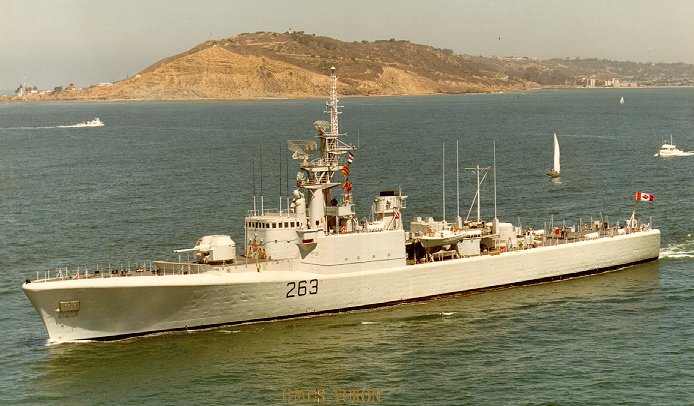
|
|
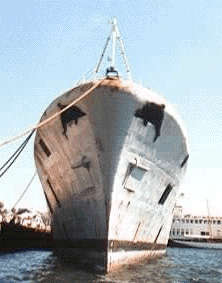 |
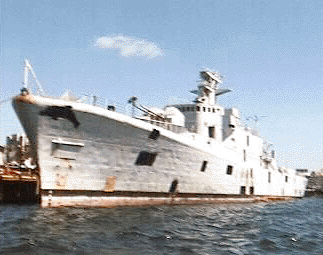 |
|
 |
The Yukon is the latest contribution to San Diego's Wreck Alley.
At 366' feet in length, it is one of California's largest wrecks accessible by divers. As the newest wreck, it is also the most intact wreck divers can visit.Through the efforts of the San Diego Oceans Foundation, the Yukon was towed down to San Diego, gutted and cleaned. On Thursday, July 13th, she was towed out and moored off Mission Bay in preparation for sinking. Explosives were placed forward and aft to sink her. The plan was to blow holes in both sides of the bow below the waterline, then blow holes in the stern. This systematic opening of the hull allowed water to fill both the port and starboard sides simultaneously, allowing the ship to settle upright. Unfortunately, the plan was never executed. That night swells rocked the ship, allowing water to enter the holes cut low to the waterline and shortly after midnight, her bow headed for the bottom. Rolling over on her port side, the stern stuck up in the air and it too sank to the bottom a hundred feet below.
Diving the Yukon
The Yukon is California’s latest and most popular wreck, both in and outside of diving circles. It is different from nearly all other wrecks as it is completely intact, which also makes it potentially one of California’s most dangerous wrecks to dive.
Unlike most ships with large open holds for cargo, the Yukon was designed to carry a crew—its bulkheads and low decks form a maze of narrow passages and small compartments, some of which are over 50’ from the nearest exit. To compound the potential danger, the ineffectual sinking of the Yukon left it on its portside, allowing sand and silt to fill the hull and block off several exits. The orientation of the ship is now offset by a strong list, increasing the depth from what was originally planned and the depths listed on the maps of the wreck.
Divers should be advised that entering the Yukon is no different than penetrating other wrecks or caves. Diving below an overhead environment is a technical dive and should only be attempted by those properly trained and equipped.
The Yukon nearly experienced its first fatality on the day it was opened to the public when an instructor nearly lost his life. After 30 minutes of being trapped inside, he finally found his way out of the wreck and onto the sand. At 100 feet deep and 100 psi left in his tank, he dropped his weight belt and shot for the surface, negating his 10 minute decompression stop.
As a corporate sponsor of Project Yukon, the California Wreck Divers encourages and supports the use of shipwrecks for artificial reefs. However, we condone diver safety above all. When diving the Yukon or other wrecks, please exercise good judgment and caution.
For illustrative purposes only--not to be used for
underwater navigation.
A detailed version of this map appears on
the plastic Yukon Diver's Slate, which may be purchased by contacting the San
Diego Oceans Foundation at (619) 523-1903.
Copyright 2000 Andrew Abouna. Reprinted by permission of Andrew
Abouna and the SDOF
Please note that due to the untimely sinking of the Yukon, six
exterior (5P1,5P2,5P3,5S1,5S2,5S3) and two interior (port and starboard forward of 5P1and
5S1) holes were not created. Also, because of the approximate 75 degree port list the
depth of the ship ranges from 55-100 feet.
| Like to learn more about this wreck? Visit our Guest Page to submit your inquiry. |
